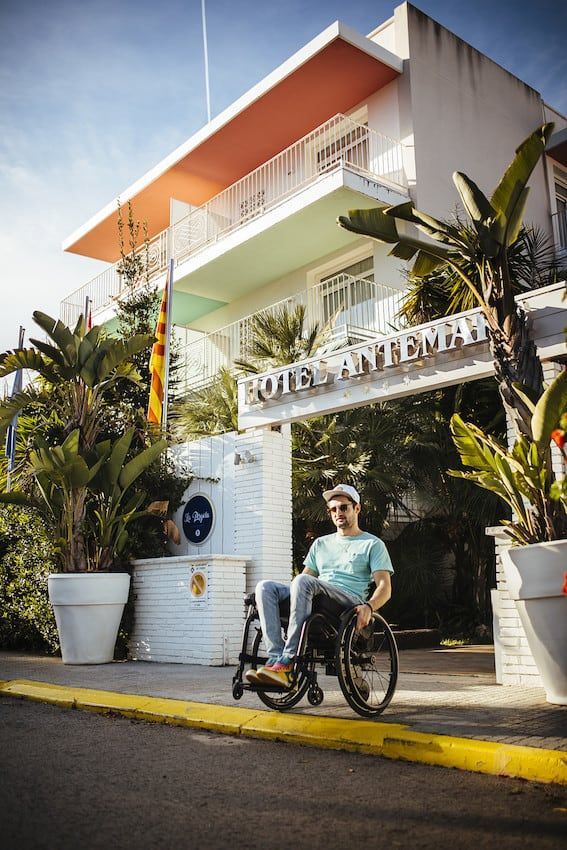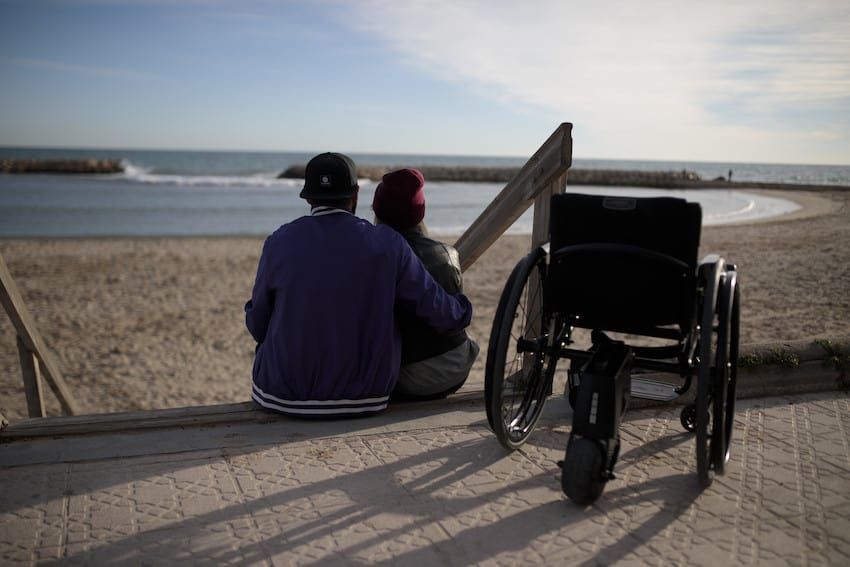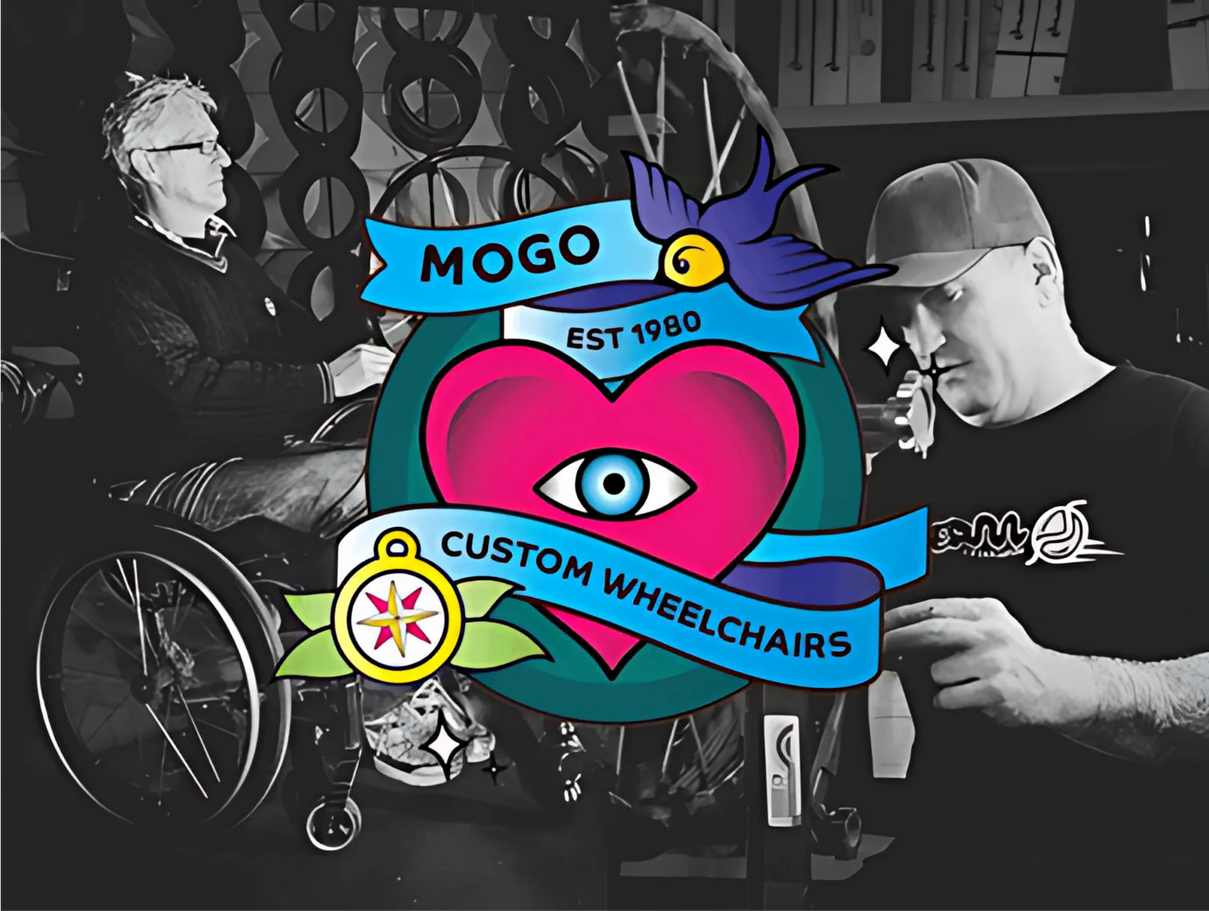Manual Wheelchairs
Manual Wheelchairs Sydney: Complete Guide to Choosing the Perfect Manual Wheelchair for Your Needs
Manual wheelchairs give Sydney residents the freedom to stay mobile, independent and active in their daily lives. At Mogo Wheelchairs, we’ve spent decades helping people across New South Wales choose the right manual wheelchair based on their lifestyle, transport setup, physical needs, and NDIS goals. Whether you need a lightweight self-propelled wheelchair for everyday use, a custom-fitted chair for long-term seating support, or a folding manual wheelchair for easy car transport, our mission is simple: deliver mobility solutions that genuinely improve quality of life, not just tick boxes on a form.
What This Guide Covers
This guide gives you a complete overview of manual wheelchairs available in Sydney, from entry-level transit chairs to ultra-light titanium frames, bariatric wheelchairs, paediatric models, and clinical tilt-in-space seating systems. You’ll learn about frame materials, wheel sizes, folding vs rigid options, active user chairs, postural support, and NDIS-approved wheelchair funding pathways. We also include Sydney-specific advice on transport, terrain, home access, public spaces, and storage.
Who This Is For
This guide is designed for wheelchair users, family members, carers, occupational therapists, plan managers, hospital discharge planners, and anyone involved in NDIS assistive technology decisions. Whether you’re choosing your first manual wheelchair, upgrading from an old model, or looking for a clinically prescribed custom chair, everything here is tailored to the realities of living and moving around Sydney.
Why This Matters
The right manual wheelchair doesn’t just move you — it supports your independence, health, social life, pressure management, posture, and confidence. A poorly fitted chair can cause pain, fatigue, pressure injuries, or reduced mobility. The right chair becomes part of your body’s movement system, making everyday life easier — from getting into a café in Newtown, to boarding a ferry at Circular Quay, to travelling by car through the Northern Beaches or Inner West.
Understanding Manual Wheelchairs
A manual wheelchair is a human-powered mobility device designed for users who can either self-propel using their arms or who require assistance from a carer. Unlike power wheelchairs, manual chairs require no charging, have fewer mechanical parts, and offer greater portability and flexibility. They are widely used in Sydney because they handle varied terrain, fit into most vehicles, comply well with public transport guidelines, and are eligible under multiple NDIS categories including AT010, AT020 and complex custom assistive technology.


Types of Manual Wheelchairs Available in Sydney
Self-Propelled Manual Wheelchairs
Designed with large rear wheels and hand rims, these chairs allow users to move independently using upper body strength. Popular for day-to-day mobility, community access and NDIS participants who prioritise freedom, self-propelled chairs are the most common manual wheelchair style in Sydney.
Attendant / Transit Manual Wheelchairs
These chairs have smaller wheels and are pushed by a carer. They are lighter, compact, and ideal for medical appointments, hospital discharge, aged care, or short-term transport.
Lightweight Manual Wheelchairs
These weigh between 8–15kg and are built with aluminium or titanium frames. They are popular for car loading, school or uni access, and users who travel frequently around Sydney by Uber, taxi or train.
Folding Manual Wheelchairs
Built with a collapsible “X-frame”, folding chairs are ideal when storage space is limited or when the chair needs to be taken in and out of a car boot multiple times a day. Many NDIS participants choose folding frames for easier travel with support workers.
Ultra-Light & Active User Manual Wheelchairs
Rigid-frame, ultra-light chairs (often under 10kg) are designed for users who value performance, agility and energy efficiency. Common among younger, active users and athletes.
Bariatric Manual Wheelchairs
ual Wheelchairs Available in Sydney
Engineered for higher weight capacity and wider seat sizes, bariatric wheelchairs provide reinforced stability and pressure distribution for larger users. Available with custom seating and cushions to prevent skin breakdown.
Tilt-in-Space & Reclining Manual Wheelchairs
These clinical-grade wheelchairs allow the seat angle to shift while maintaining posture support. Essential for users with high-level care needs, complex seating requirements, or pressure management concerns.
Paediatric Manual Wheelchairs
Sized and configured for children, these chairs allow growth-friendly adjustment, colourful frame choices, and compatibility with postural supports, headrests, swing-away leg rests and school transport needs.
Sports & Everyday Active Wheelchairs
Used for basketball, tennis, racing, outdoor fitness or high-performance daily mobility. These are ultra-responsive, rigid-frame chairs with customised camber and balance points.
Custom Manual Wheelchairs (NDIS / Clinical Fit)
Custom chairs are built to exact body measurements, posture needs, pressure mapping results and environmental requirements. Includes carbon fibre, titanium, specialised backrests, custom cushions and mobility add-ons. Most complex seating systems fall under NDIS AT funding.
Features to Consider
When choosing a manual wheelchair, the most important features include frame type (folding vs rigid), weight, seat width and depth, backrest height, cushion type, tyres (solid vs pneumatic), armrest style, footrest setup, and transport compatibility. NDIS-funded users should also consider clinical assessment, trial availability, pressure mapping, and future adjustability. For Sydney users, think through doorways, lift sizes, kerb ramps, car boot height, and steep footpaths.
Choosing Your Manual Wheelchair: Sydney Considerations
Sydney’s hilly suburbs, buses and trains, and compact inner-city spaces all influence wheelchair choice. A step-by-step selection process usually includes:
- Functional assessment and seating trial
- Decision on frame type (folding or rigid)
- Weight and transport needs
- Cushion and backrest prescription
- Clinical sign-off for NDIS funding (if applicable)
- Final fitting with adjustments and postural setup
Real Life Example Scenario: How the Right Manual Wheelchair Changed Everyday Life for a Sydney Resident
When Jane, a 32-year-old office worker from Marrickville, first contacted Mogo Wheelchairs, she was struggling with her old, heavy manual wheelchair. The chair weighed over 21kg, making it difficult to get in and out of her small apartment and impossible to lift into her hatchback without help. Sydney’s hills, especially around Newtown and Enmore, meant she was constantly battling shoulder pain from self-propulsion. She was also relying heavily on taxis because her chair didn’t fold compactly enough for train or bus travel.
After a full assessment with our team — including posture checks, mobility goals, and NDIS requirements — we recommended an ultra-light rigid-frame manual wheelchair with quick-release wheels, ergonomic push rims, and a pressure-relief cushion. We also arranged a trial so she could test the chair on the exact routes she takes daily: walking paths, train platforms, work hallways, and her apartment entry.
The difference was immediate. The new 9kg frame meant she could lift the chair into her car independently. The improved wheel and tyre setup reduced propulsion effort by more than half, allowing her to take Sydney’s inclines without shoulder strain. She now uses trains daily, no longer avoids social outings, and reports significant increases in both comfort and confidence. Her NDIS plan covered the full cost, including custom cushion, fitting, and ongoing maintenance.
Today, Jane describes her upgraded manual wheelchair as “the first time I’ve actually felt in control of my mobility, not controlled by it."
Comparison: Standard vs Lightweight Manual Wheelchairs
| Feature | Standard Manual Wheelchair | Lightweight Manual Wheelchair |
|---|---|---|
| Weight | 20-25kg | 8-15kg |
| Car Loading | Requires two people | Single person manageable |
| Durability | Maximum strength | High strength, lighter materials |
| Cost | $350-$1,200+ | $1,000-$2,500+ |
Lightweight manual wheelchairs suit Sydney users who prioritize independence in transport and storage, while standard chairs provide maximum durability for heavy daily use at a lower initial cost.
Accessories and Upgrades
Popular accessories include power-assist wheels, anti-tip bars, pressure relief cushions, quick-release wheels, spoke guards, side-bags, oxygen holders, specialist tyres and rain covers. Many are eligible for NDIS assistive technology funding when clinically justified.
Maintenance and Repair
Manual wheelchairs last longer with routine servicing. Tyre pressure, bearings, brakes, cushion integrity and frame bolts should be checked regularly. Mogo Wheelchairs offers Sydney-wide servicing, repairs and replacement parts — including NDIS-funded maintenance plans.
Common Manual Wheelchair Challenges and Solutions
Challenge 1: Navigating Sydney’s Hilly Terrain
Many Sydney suburbs — particularly the Inner West, North Shore, and Northern Beaches — include steep gradients that can quickly lead to upper-body fatigue, shoulder strain, and reduced independence in self-propelled manual wheelchairs.
Solution: We recommend lightweight wheelchair frames (aluminium, titanium, or carbon fibre) with performance wheelsets, ergonomic push rims, and optional power-assist hubs such as SMOOV or e-fix. These upgrades reduce propulsion effort by up to 70%, making hills manageable without switching to a powered wheelchair.
Challenge 2: Public Transport and Vehicle Access
Sydney’s train network, ferries, and newer buses are wheelchair-accessible, but not all manual wheelchairs are designed to fit easily through doors, ramps, and mobility platforms. Car boot space also varies widely between sedans, hatchbacks, and SUVs.
Solution: Folding manual wheelchairs or ultra-light rigid frames with quick-release wheels are ideal for transport. Compact frames, shorter wheelbases, and removable armrests make transfers easier for both users and carers. Mogo Wheelchairs also provides NDIS-approved trials to ensure your chair fits your vehicle or transport routine before purchase.
Challenge 3: Long-Term Postural and Seating Comfort
Many wheelchair users spend 6–12 hours a day in their chair, which can lead to back pain, pressure injuries, poor posture, and reduced circulation if the seating isn’t properly configured.
Solution: We prescribe clinical seating solutions such as pressure-relief cushions, contoured backrests, tilt-in-space systems, and customised seat depth and width. These adjustments are NDIS-fundable when clinically justified and prevent long-term musculoskeletal issues.
Challenge 4: Uneven Footpaths and Outdoor Surfaces
Cobblestones, tree-rooted pavements, beach paths, and older kerb ramps are common across Sydney, especially in coastal and heritage suburbs. These surfaces can cause vibration, instability, and wrist strain.
Solution: Pneumatic tyres, softer caster wheels, and suspension forks can dramatically improve ride comfort. Wider tyre profiles and off-road wheel options are also available for wheelchair users who frequently access parks, beaches, and outdoor trails.
Challenge 5: Fatigue from Long-Distance Propulsion
Self-propelled users — especially students, workers, and commuters — often report fatigue when travelling long distances between home, uni, work and transport hubs.
Solution: Lightweight frames, reduced rolling resistance tyres, and active-user wheelchairs make propulsion more energy-efficient. For higher-intensity propulsion needs, power-assist options or dual-use hybrid wheelchairs may be more suitable than switching to a full electric chair.
Challenge 6: Limited Storage Space in Sydney Homes
Apartments and terrace houses in Sydney often have narrow hallways, limited storage, and stairs, making it difficult to store or manoeuvre a bulky manual wheelchair indoors.
Solution: Foldable manual wheelchairs, removable wheels, and wall-mounted indoor storage brackets allow users to store their chair easily in small living spaces. This is especially helpful for NDIS participants living in shared or supported housing.
Conclusion and Next Steps
The right manual wheelchair will support your independence for years. The fastest way to choose the right one is a professional trial and fitting. At Mogo Wheelchairs, we offer in-showroom trials, in-home assessments, NDIS-approved quotes, pressure mapping, and customised setup.
Additional
Resources
•
Mogo Wheelchairs Sydney Showroom – book a trial or fitting
•
NDIS Assistive Technology support – we handle quotes and justification reports
•
Manual wheelchair repairs and servicing across NSW
•
Power-assist add-ons for manual wheelchairs (e.g. SMOOV, e-fix, Batec)

